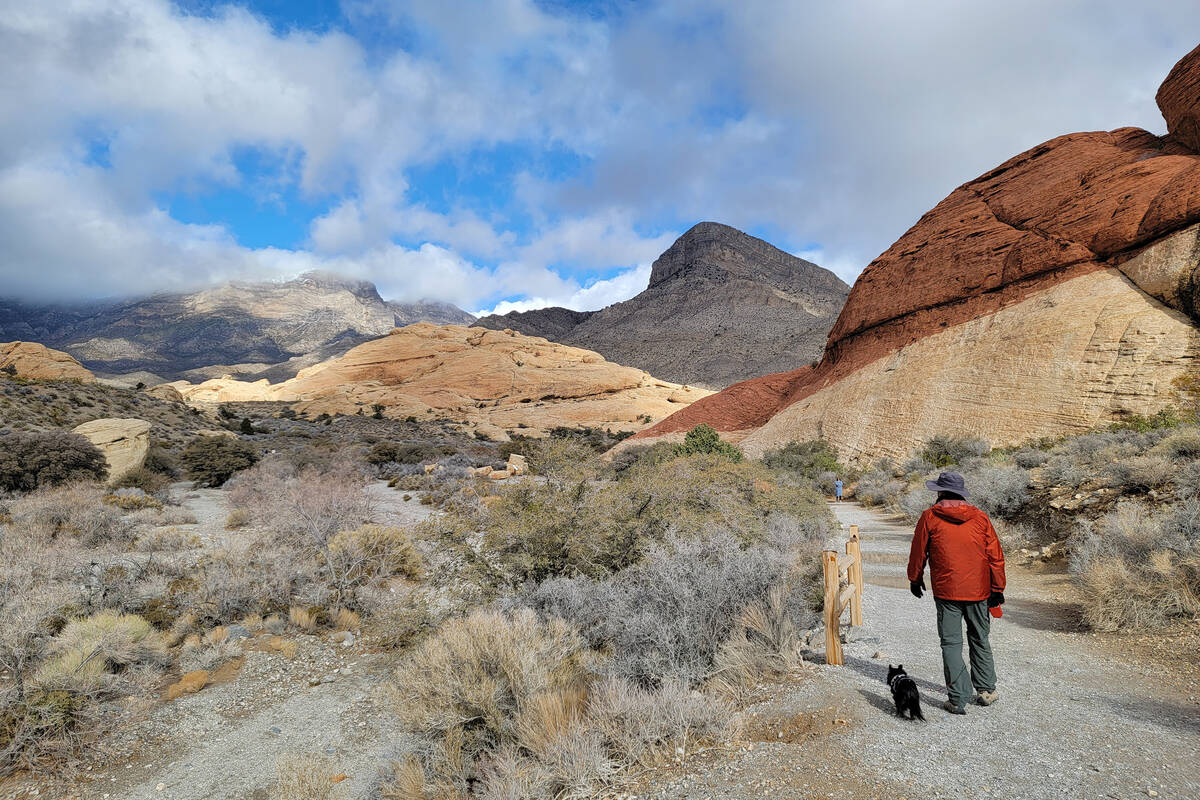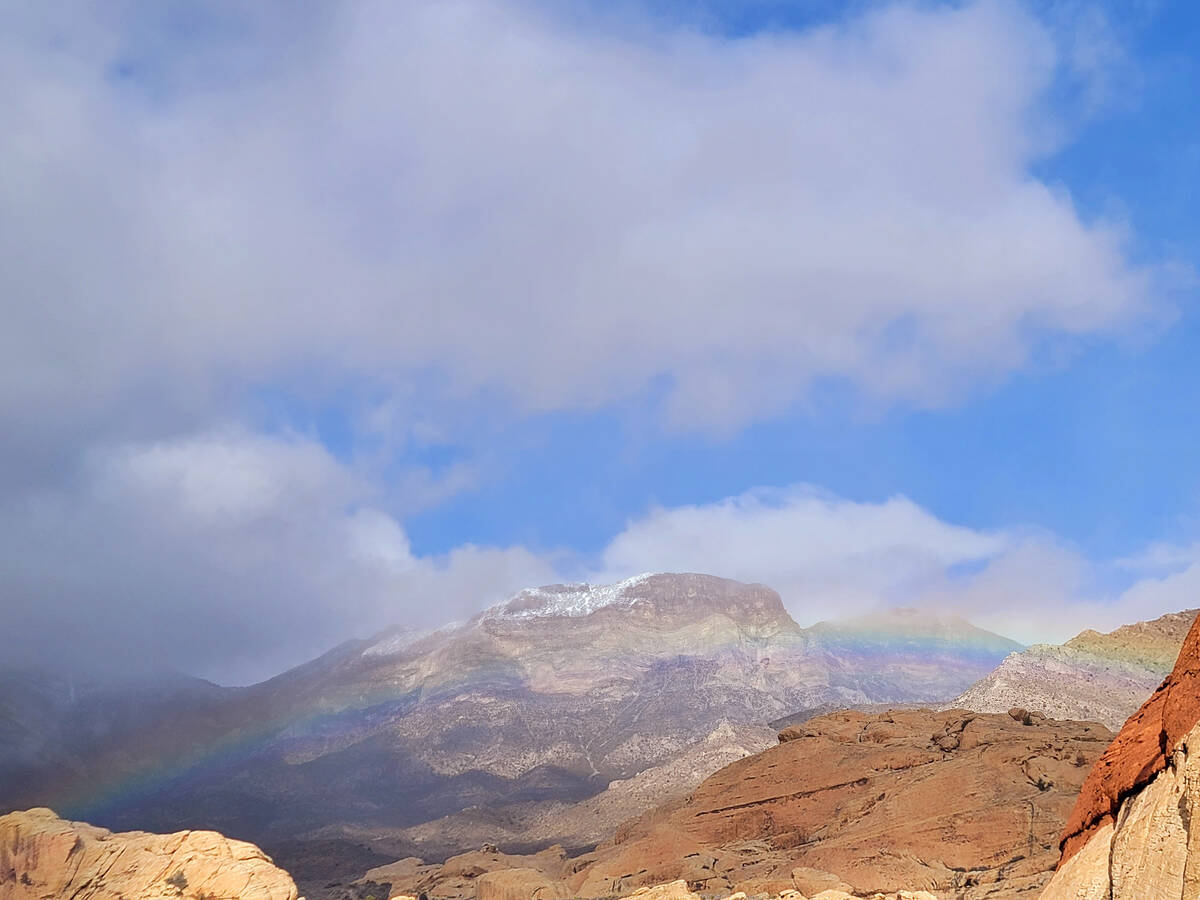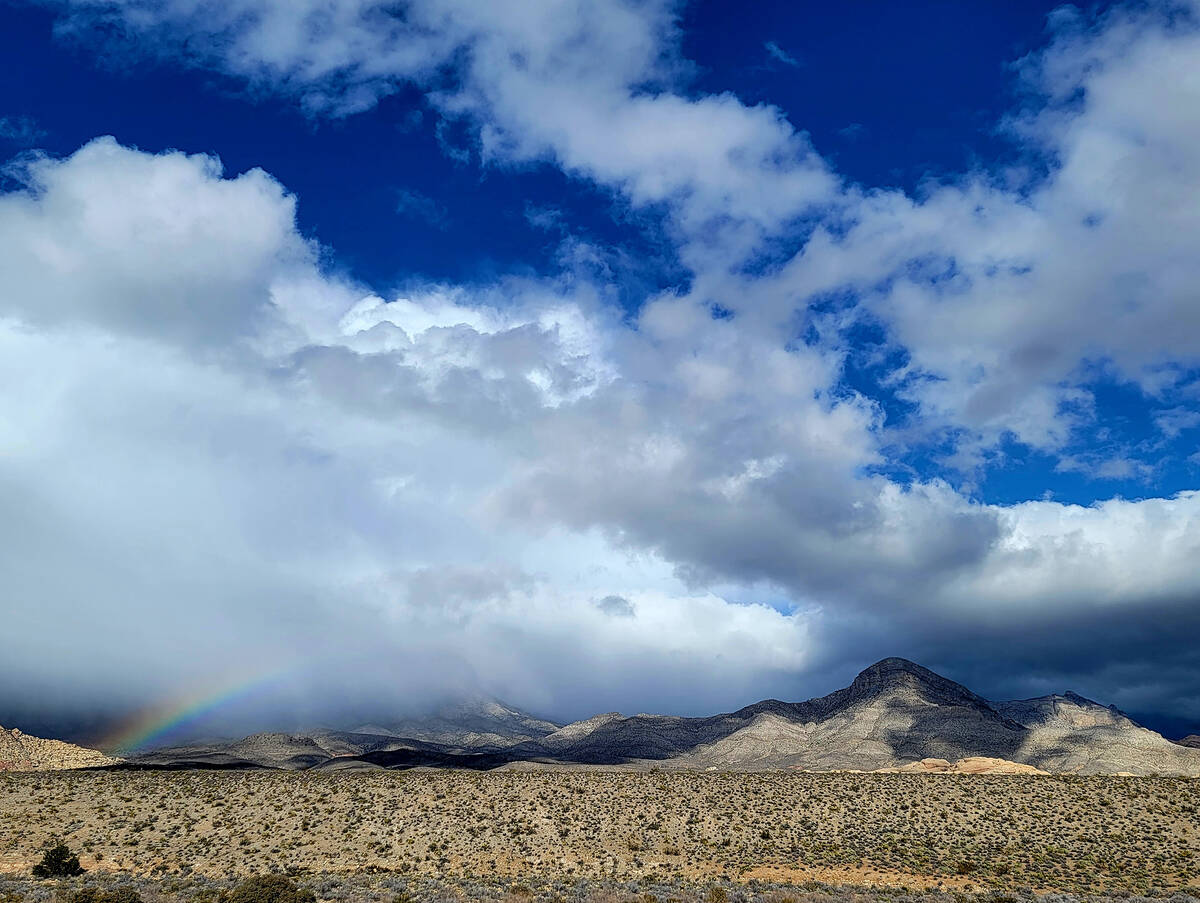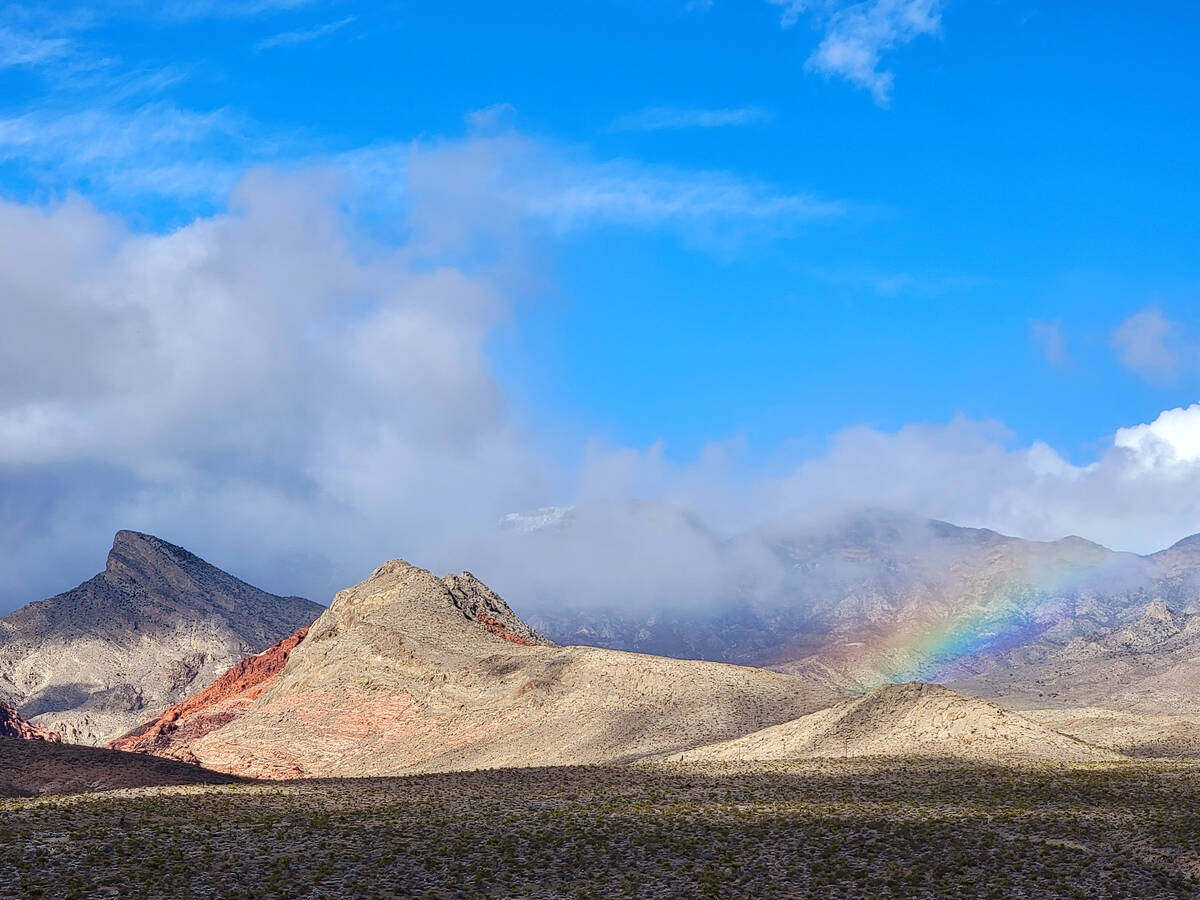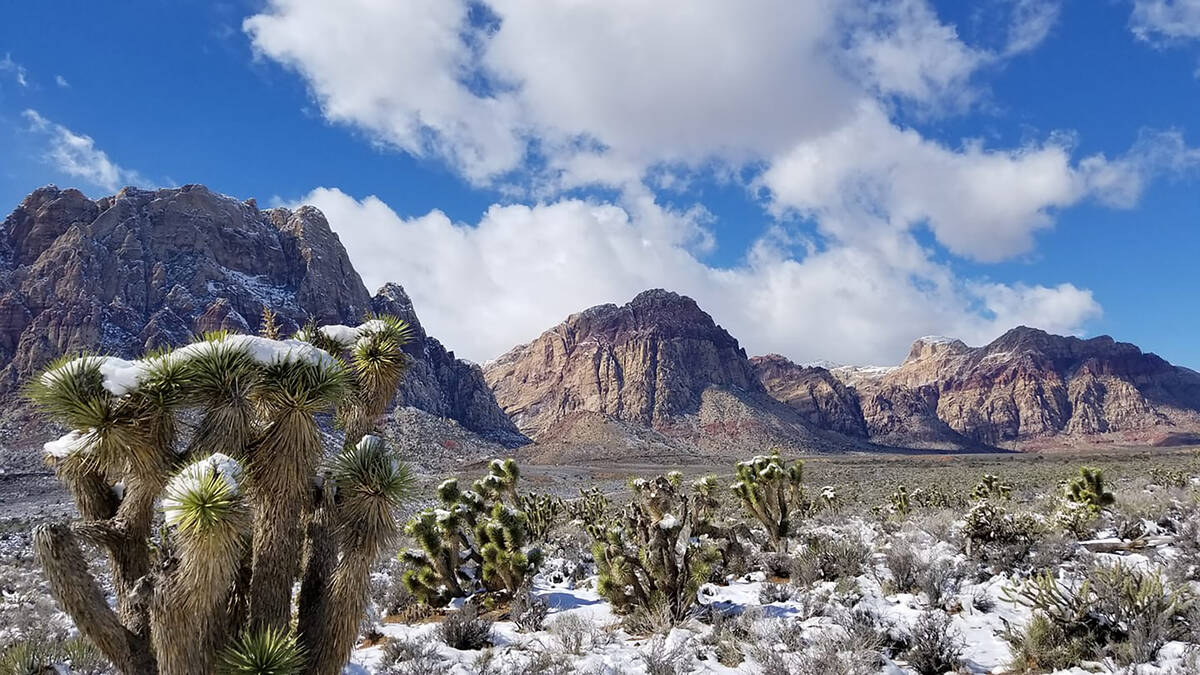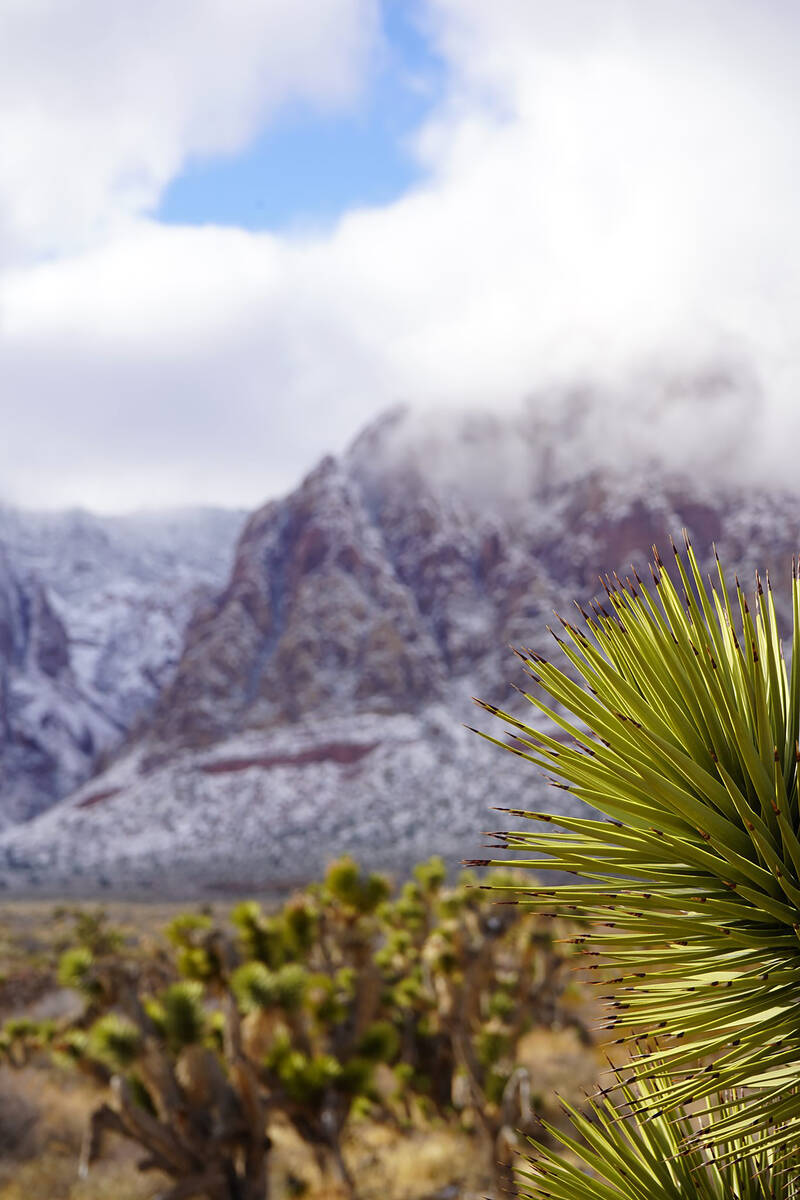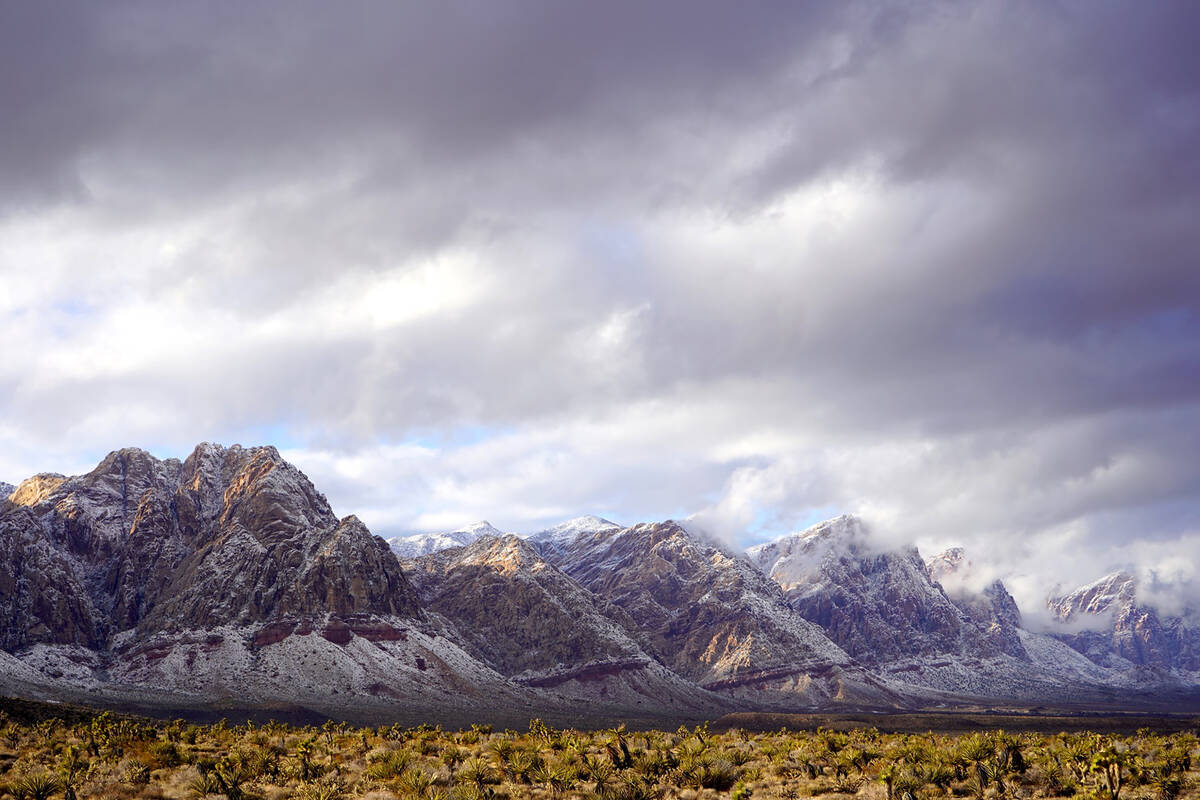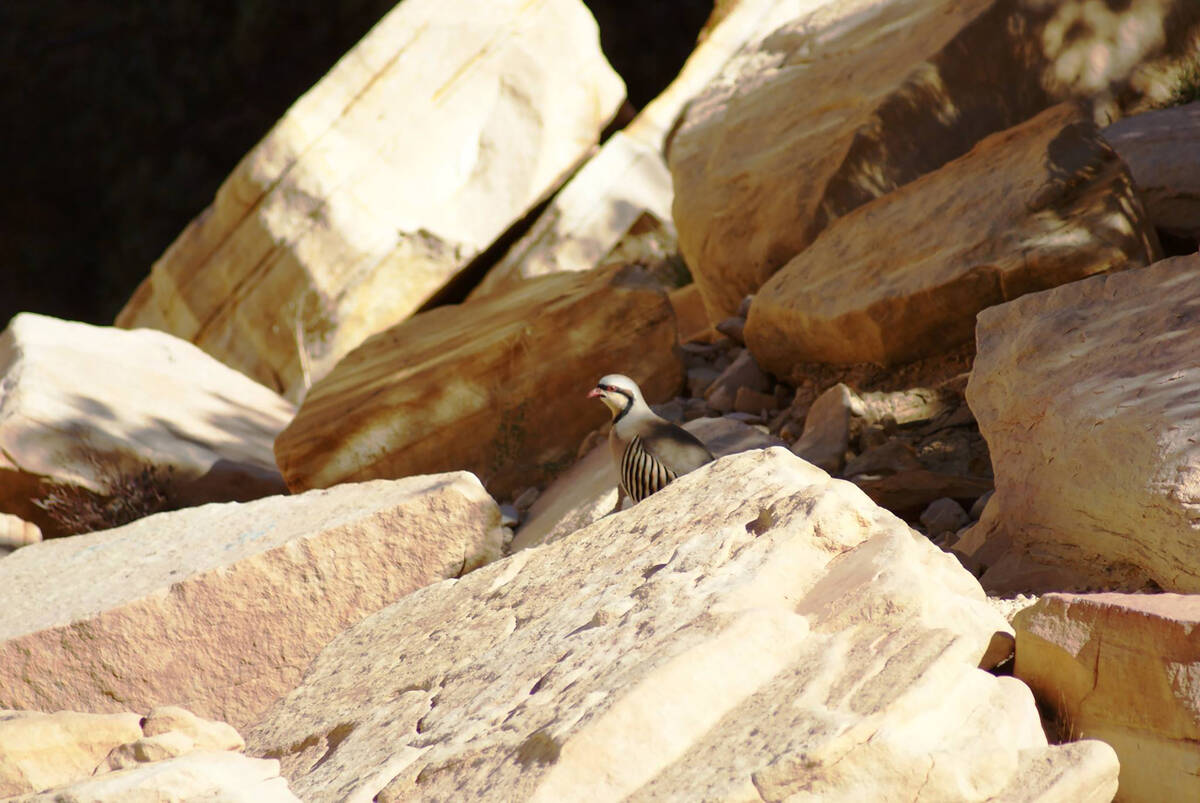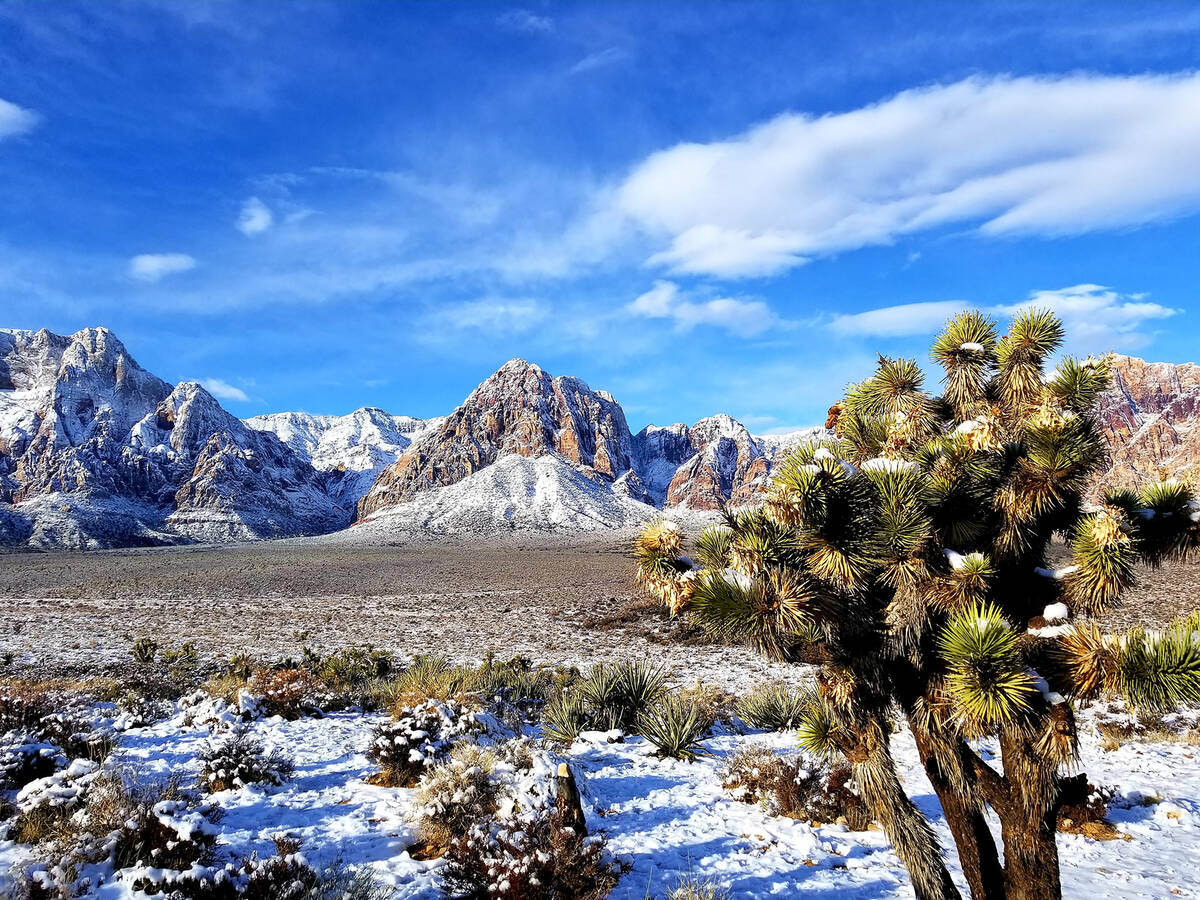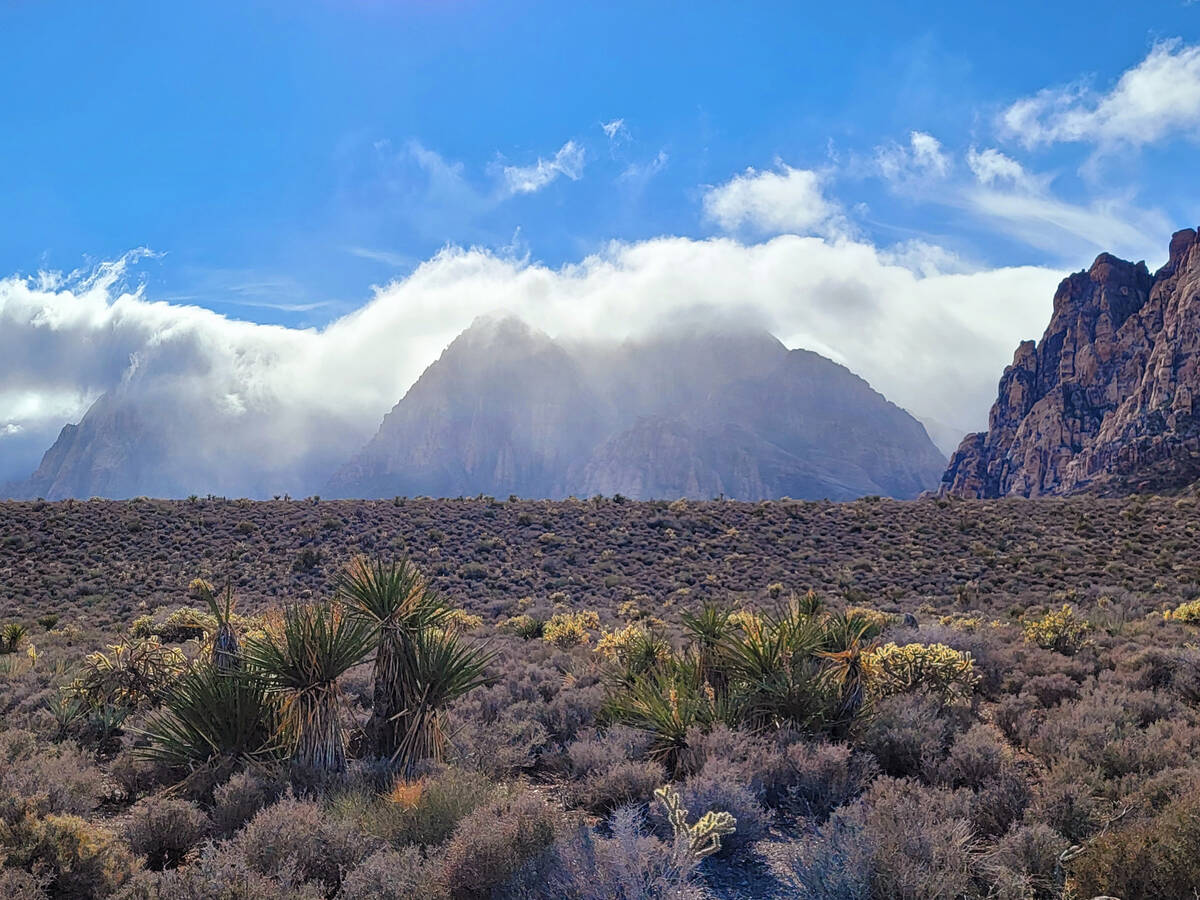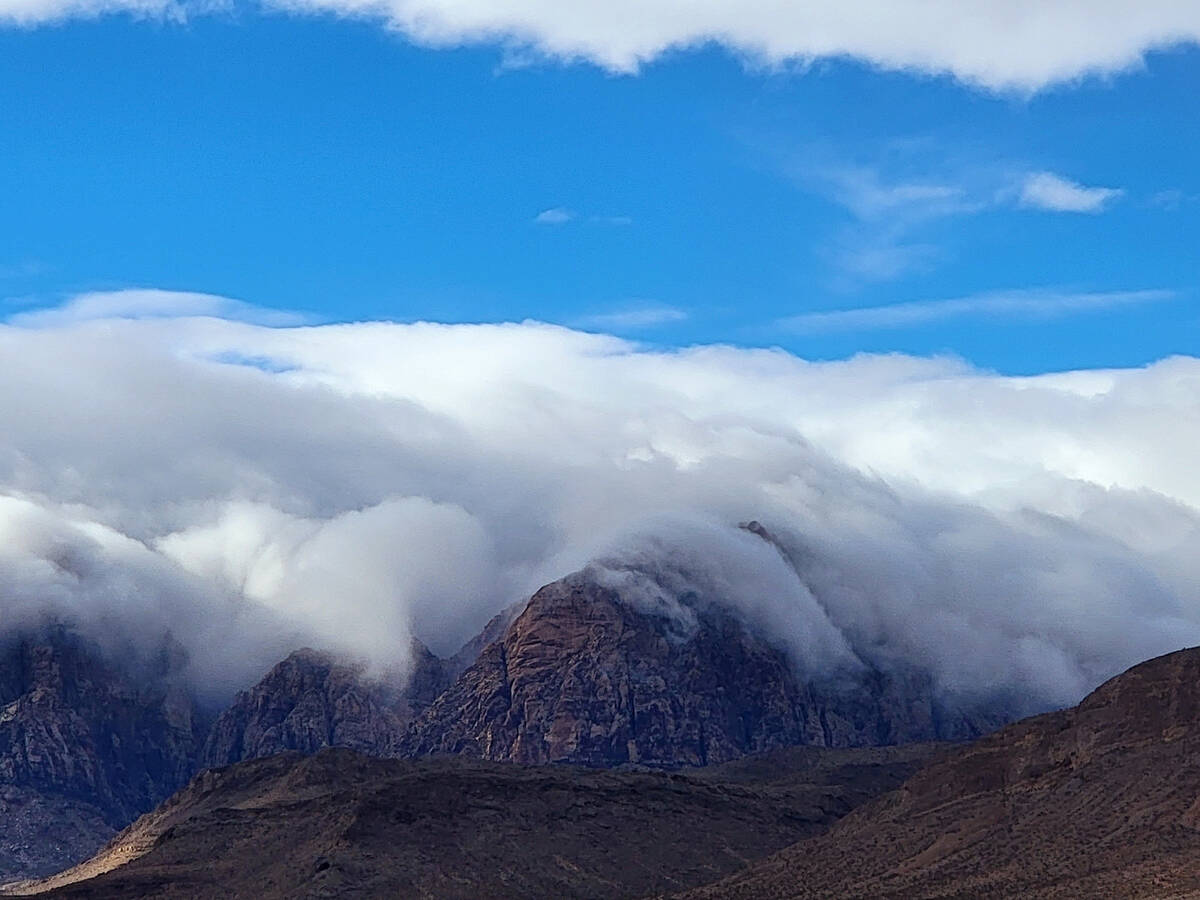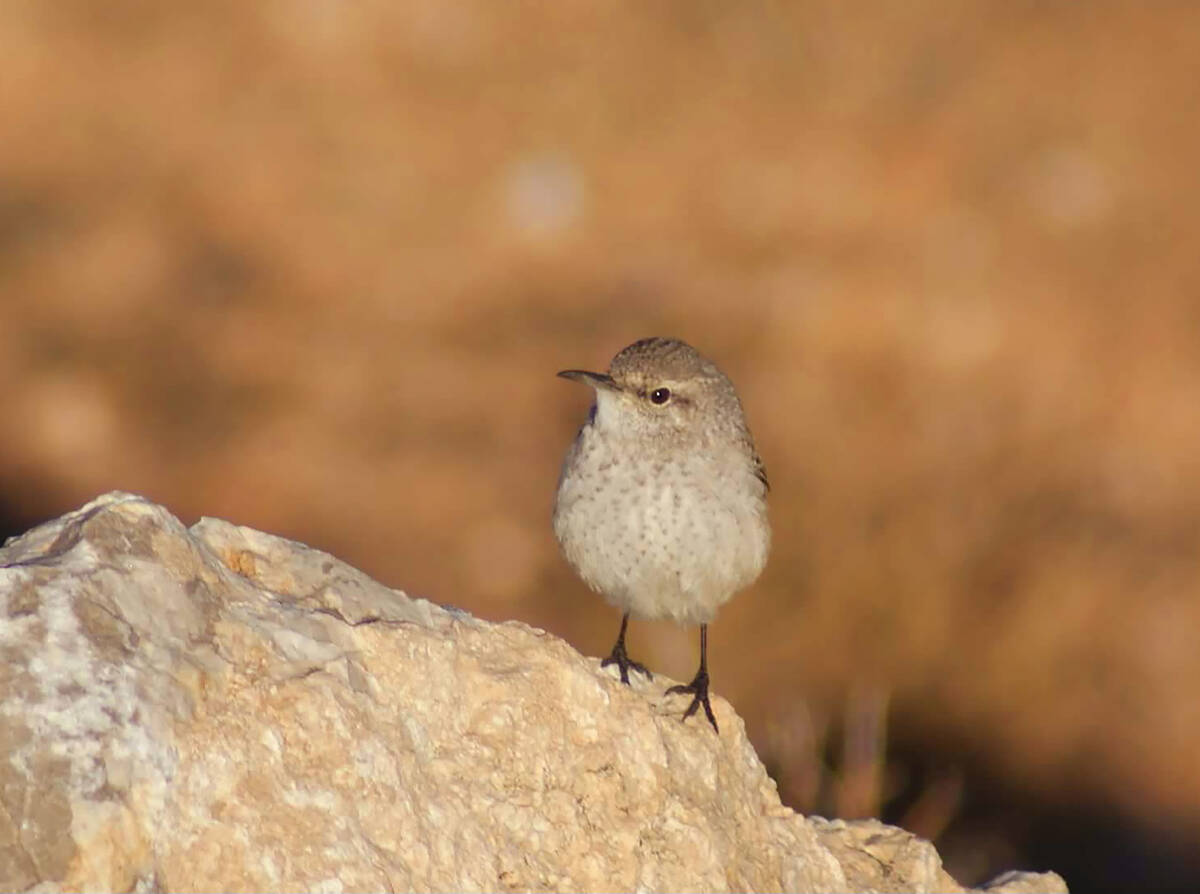January hike at Red Rock offers hope for inspired year ahead
Starting off the new year with a Red Rock nature show has been my Jan. 1 choice most years for the past three decades.
One year, chukars greeted us and our pan of Hoppin’ John at Willow Spring picnic area. A more recent time brought us three coyotes, two mule deer, four ladderback woodpeckers, a rock wren and a red-tailed hawk while we hiked Oak Creek trail.
For 2023, partial rainbows grabbed our New Year’s Day attention as we drove on a dreamy road that winds 13 miles through Red Rock’s splendor.
Such visits reaffirm my commitment to get out to Red Rock Canyon National Conservation Area as much as possible throughout the rest of the year. I know I’ll need the awe, exercise and reminders of life’s beauty.
Wintry wandering
In January and February, hiking is typically a chilly pursuit at Red Rock. Daytime temperatures average in the 50s but often hover in the 40s, and the possibility for rain or snow is at its greatest. Gentle rainfall, partial cloud coverage and the sun’s rays hitting at cooperative angles boost the chances for rainbows.
Our first rainbow fragment this year was spotted from the Red Rock sign, a popular photo stop along state Route 159 en route to the loop’s entrance and fee station from West Charleston Boulevard. Reservations are required for anyone wanting to drive on the 13-mile scenic loop and can be made at recreation.gov. There’s a $2 processing fee, and visitors can either pay $15 for a day pass or use an annual pass ($80 for America the Beautiful).
Dramatic clouds — some cascading over peaks of the adjacent east-facing escarpment of the Rainbow Mountain Wilderness Area — added to the day’s artistry. Wind and light rain were part of the picture, too, and that made our bundled-in-ski-jacket stops shorter than usual at Sandstone Quarry, High Point Overlook, Willow Spring, Red Rock Wash Overlook and Pine Creek Canyon. Vivid rainbow chunks were visible and contrasted with drab desert colors from vantage points at Sandstone Quarry and Red Rock Wash Overlook.
Most animals were hiding from the elements this New Year’s Day, but we saw spotted towhees, a juniper titmouse, a Woodhouse’s scrub-jay and a couple of ground squirrels.
At times on the drive, mist shrouded multicolored sandstone peaks rising a couple of thousand feet above the beige and gray desert floor. Rain and cloudy weather darkened much of the typically bright reds and oranges of cliff and canyon. Shafts of light added a spectacular effect along the length of the east-facing escarpment.
Green persists in winter for Mojave and banana yuccas, Joshua trees and buckhorn chollas. But most shrubs and perennials appear lifeless. The rolling landscape is covered in what looks like a camel-colored suede of dried grasses. There are no flowers, just dried up stalks and remnants of annuals that might still be clinging to a few seeds. Empty, brittle shells of stems of desert trumpets remain.
Thoughts of spring
A couple of times each winter, magic happens when snow falls on Red Rock’s lower elevations of 3,500 feet. After those colder storms, there’s widespread sparkle as the sun hits snow tucked into rosettes of sword-shaped leaves of the yucca and Joshua tree. Cactus paddles and spines poke through snow. Peaks of the Rainbow Mountain Wilderness Area get frosted with what looks like powdered sugar.
Thicker blankets of snow stick around longer at the higher elevations of the towering gray Spring Mountains above Red Rock, but lower-elevation snow typically melts soon after storms because of rising daytime temperatures at lower elevations. Melting snow drips from golden spines of buckhorn cholla. Water spills over rocks and pools to create reflections.
After snow vanishes from the scene, winter’s starkness returns and gives visitors a blank canvas for imagining spring’s return. It’s easy to conjure visions of March, when the desert will begin greening up, thanks to the precipitation winter brings. Early flowers like wild rhubarb, manzanita, filaree and amsonia will kick off wildflower season. If conditions are right, April and May will bring an abundance of blooms — mariposa, penstemon, indigobush, larkspur, globemallow, Indian paintbrush, redbuds, Fremont’s phacelia, primrose, cliffrose, desert marigold and several cactus varieties.
On peaceful winter days, trail thoughts about spring can include anticipating the return of birds like the black-throated sparrow that nest and raise families at Red Rock, and plotting the best spots to see lizards, including chuckwallas and Great Basin collared and horned lizards. For dreamers, there’s the ever-present and exceedingly remote possibility of seeing a Gila monster.
Red Rock visits in January are for spring strategy and for cherishing winter moments spent with frenetic jackrabbits, shockingly bright lichens and whimsical rocks. Time on the trails early in the year offers hope that more inspired days get added to calendars. I intend for 2023 to visit Red Rock at least once a month (three times each for March, April and May for flowers and reptiles). Another goal is to take someone for the first time to this treasure in Southern Nevada’s backyard.



